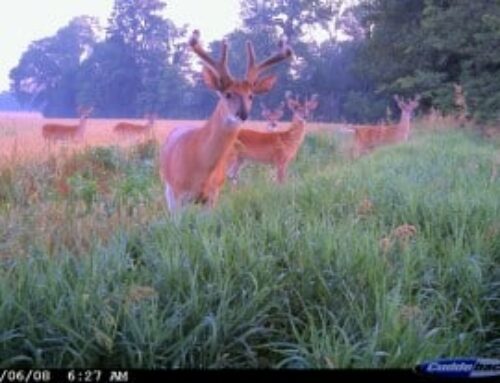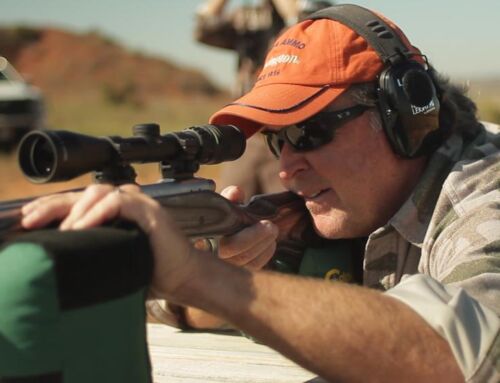 One muggy morning in early February I sat in box blind in south Alabama and waited for the sun to shine. At 6:30 I saw a doe. Two hours later a fawn straggled through. Nine hours later I caught movement in the growing dusk, a buck! His rack had 4 nice points on one side and a big fork on the left. Ugly, but he was mature and I was going to shoot him.
One muggy morning in early February I sat in box blind in south Alabama and waited for the sun to shine. At 6:30 I saw a doe. Two hours later a fawn straggled through. Nine hours later I caught movement in the growing dusk, a buck! His rack had 4 nice points on one side and a big fork on the left. Ugly, but he was mature and I was going to shoot him.
Ugly was jittery and on the move. Eccck. At the sound of my mouth grunt the buck blew up, whirling and flipping off into a cedar patch, leaving me to gawk at thin air through the riflescope.
Ah, a typical day in the Deep South. These are some of the toughest deer I’ve ever hunted, and here are 3 reasons why.
Pressure Factor
From Louisiana to Alabama, more than 1.2 million licensed hunters hit the woods each season. These Southerners are passionate about their bow and gun hunting, and most of them spend multiple weeks in a stand. By the time the rut rolls around in December, or January and into February in some areas, deer have been busted, shot at and thoroughly hassled for months. Old bucks are ultra-spooky and largely nocturnal.
An old-timer from Mississippi told me one time, “Our bucks walk around with their noses in the wind, looking up into the trees for hunters.” I sort of believe it.
Play the wind religiously. Hide your tree stands and blinds as best you can in cover and shadows. Be quiet as a mouse. In the Midwest and farther north, you can grunt or even yell to stop a buck for a shot. Do that down south and a shooter is apt to come unglued, as I found out the hard way.
Rough Habitat
Many private lands and all the public ground in the Deep South are rough and tumble—red clay with briars and weeds, planted pines, swamps, huge clear-cuts…The land I hunted in Alabama was all cedars and broom sedge. It is hard for deer to make a living in these habitats. Unlimited cover, but the animals have to wander to find food, browsing and nibbling whatever vegetation they can find. Which makes it difficult if not impossible to pattern a buck on a bed-to-feed pattern, especially in a poor mast year.
Good strategy, then, is to find a good funnel or edge with fresh tracks and rubs; hide a tree stand or blind on the downwind side; and hunt as long and hard as you can. Since the deer move randomly, it stands to reason that your best chance at a mature buck is during the rut. But…
Trickle Rut
While states in the Midwest and farther north have a noticeable if loosely defined rutting period of 10 days to 3 weeks in November, it’s a “trickle rut” in the Deep South. From late December thru early February, expect spotty periods of pushing and chasing for 4 to 6 weeks or more, with lots of slow days in between.
On the rough lands, the buck:doe ratio of the herds is out of whack (too many does), which leads to an extended breeding season with many peaks and valleys of buck movement. Warm weather is also a factor. It may be 70 to 80 degrees and humid for a week or longer in January. Bucks push and chase does at night, though you won’t see it.
On my recent hunt in Alabama, temps held in the muggy 70s for 3 days, and it rained on and off. After I spooked the janked-up 6-pointer with an ill-timed grunt, I didn’t see another mature deer for 4 days.
My last morning, the pesky low pressure passed, and the temperature dipped into the 30s. An hour after sunrise a doe popped out of the cedars near my blind with a 4-year-old 9-pointer on her heels. He was close and moving, but I resisted the urge to stop him. I tracked him in the scope, and the second he paused I cover his shoulder and killed him.
One last bit of advice. When a cold front rolls in during the rut and high pressure and clear skies build in behind it, hustle to a stand because that’s the best time to shoot a Southern buck.






